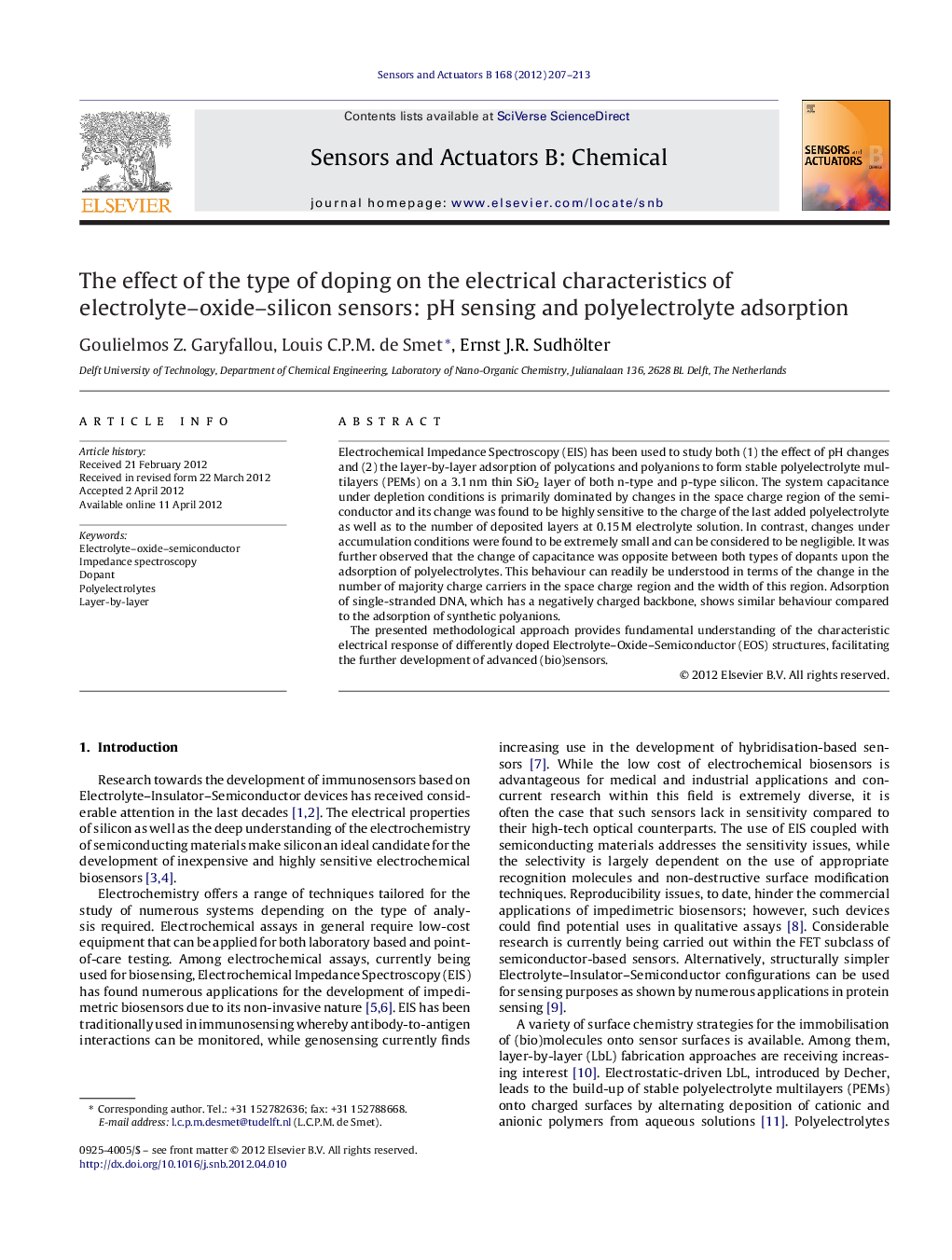| کد مقاله | کد نشریه | سال انتشار | مقاله انگلیسی | نسخه تمام متن |
|---|---|---|---|---|
| 742470 | 1462121 | 2012 | 7 صفحه PDF | دانلود رایگان |

Electrochemical Impedance Spectroscopy (EIS) has been used to study both (1) the effect of pH changes and (2) the layer-by-layer adsorption of polycations and polyanions to form stable polyelectrolyte multilayers (PEMs) on a 3.1 nm thin SiO2 layer of both n-type and p-type silicon. The system capacitance under depletion conditions is primarily dominated by changes in the space charge region of the semiconductor and its change was found to be highly sensitive to the charge of the last added polyelectrolyte as well as to the number of deposited layers at 0.15 M electrolyte solution. In contrast, changes under accumulation conditions were found to be extremely small and can be considered to be negligible. It was further observed that the change of capacitance was opposite between both types of dopants upon the adsorption of polyelectrolytes. This behaviour can readily be understood in terms of the change in the number of majority charge carriers in the space charge region and the width of this region. Adsorption of single-stranded DNA, which has a negatively charged backbone, shows similar behaviour compared to the adsorption of synthetic polyanions.The presented methodological approach provides fundamental understanding of the characteristic electrical response of differently doped Electrolyte–Oxide–Semiconductor (EOS) structures, facilitating the further development of advanced (bio)sensors.
Journal: Sensors and Actuators B: Chemical - Volume 168, 20 June 2012, Pages 207–213